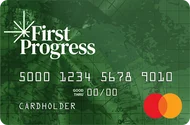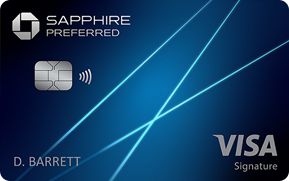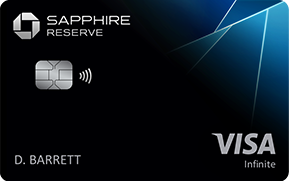
What is Debt Consolidation?
Debt consolidation involves combining multiple debts into one monthly payment. This approach simplifies your financial obligations and can often secure a lower interest rate, reducing the overall cost of your debt. Debt consolidation can include credit card debts, personal loans, medical bills, and other unsecured debts.
Benefits of Debt Consolidation
Simplified Payments
Managing one monthly payment is much easier than juggling multiple due dates and amounts. Debt consolidation streamlines your payment process, reducing the risk of missing payments.
Lower Interest Rates
Debt consolidation loans usually come with lower interest rates compared to credit cards and other high-interest debts. This can save you a significant amount of money over time and help you pay off your debt faster.
Improved Credit Score
Regularly making on-time payments on your consolidated loan can improve your credit score. Additionally, reducing your overall credit utilization ratio can positively impact your credit rating.
How to Consolidate Debt in Dallas
Assess Your Financial Situation
Start by evaluating your financial situation. List all your debts, including balances, interest rates, and monthly payments. This will give you a clear picture of your total debt and help you decide if consolidation is the right choice.
Choose the Right Type of Consolidation
There are several ways to consolidate debt some are loans and other are programs:
- Personal Loans: Offered by banks, credit unions, and online lenders specifically for debt consolidation.
- Balance Transfer Credit Cards: These cards offer 0% introductory APR for balance transfers, making them suitable for consolidating high-interest credit card debt.
- Home Equity Loans: Homeowners can use their home equity to secure a loan for debt consolidation.
- Debt Settlement: This involves negotiating with creditors to settle your debts for less than the full amount owed. This can significantly reduce your debt but may initially impact your credit score.
- Debt Management Plans: These plans are often offered by credit counseling agencies. They involve negotiating lower interest rates and consolidating your debt payments into a single monthly payment.
Compare Lenders
Research and compare lenders to find the best rates and terms for your debt consolidation loan. Pay attention to interest rates, fees, loan terms, and customer reviews.
Apply for a Loan
Once you’ve chosen a lender, apply for a debt consolidation loan. Be prepared to provide financial information, including income, employment, and existing debts.
Pay Off Existing Debts
Use the loan funds to pay off your existing debts. Make sure to make your monthly payments on the new loan to stay on track and improve your credit score.
Debt Consolidation Services in Dallas
AAA Debt Solutions
AAA Debt Solutions is a debt consolidation company located in Dallas, Texas. We offer tailored debt consolidation services to help Dallas residents manage their debts effectively. We provide comprehensive solutions to meet individual financial situations, ensuring a path to debt relief. With multiple options like debt consolidation loans and debt settlement we can assist clients in finding the best solution for their specific needs.
Dallas Credit Unions
Local credit unions in Dallas often offer competitive rates on personal loans for debt consolidation. They provide personalized services and lower fees compared to traditional banks.
Online Lenders
Many online lenders provide debt consolidation loans with quick approval processes and competitive rates. Research reputable online lenders to find the best fit for your needs.
Is Debt Consolidation Right for You?
Debt consolidation can be an excellent tool for managing and reducing debt, but it’s not suitable for everyone. Consider your financial situation, the types of debt you have, and your ability to make consistent payments on a new loan. Consulting with a debt consolidation specialist can help determine if this strategy is right for you.
Detailed Steps for Effective Debt Consolidation
Check Your Credit Score
Your credit score plays a significant role in qualifying for a debt consolidation loan. Borrowers with good to excellent credit typically qualify for more options and lower interest rates.
Pre-Qualify with Lenders
Pre-qualifying with multiple lenders can give you an idea of the rates and terms you might qualify for without impacting your credit score. This allows you to shop around and compare different offers.
Make a List of Debts
Ensure your new debt consolidation loan covers the total amount of your existing debt. Calculate your monthly payments and confirm that the new interest rate is lower than your current rates.
Ensure Affordability
Before committing to a debt consolidation loan, make sure you can afford the monthly payments without adding more financial stress. Create a budget to manage your expenses effectively.
Maintain Financial Discipline
After consolidating your debt, it’s crucial to maintain financial discipline. Avoid racking up new debt and focus on making on-time payments to improve your credit score and financial health.
Additional Tips for Debt Management
- Use Credit Wisely: Keep credit card balances low to improve your credit score.
- Build an Emergency Fund: Save money to cover unexpected expenses and avoid accumulating new debt.
- Seek Professional Advice: Consult a debt specialist to find a solutions for your debt.
Conclusion
Debt consolidation can simplify your financial life and help you achieve financial stability. If you’re a Dallas resident struggling with multiple debts, consider exploring your consolidation options. With careful planning and the right approach, you can take control of your debt and work towards a debt-free future.
For more information or to schedule a free consultation, contact AAA Debt Solutions today. We’re here to help you navigate your debt relief options and find the best solution for your financial needs.
Remember, it’s crucial to choose a solution that fits your budget and financial goals to avoid falling into more high-interest debt or worsening your financial situation. Contact us at AAA Debt Solutions for a free consultation.























